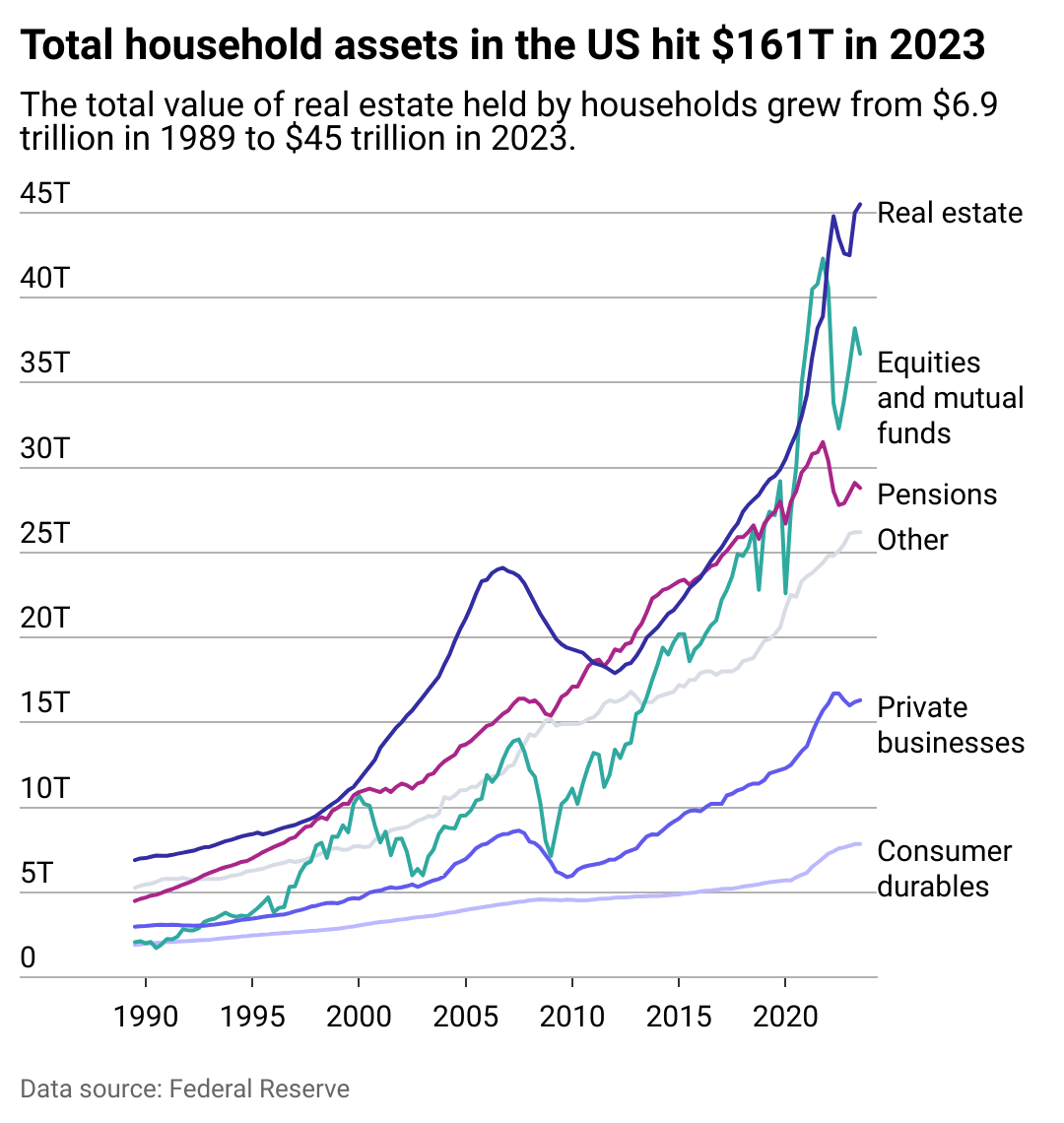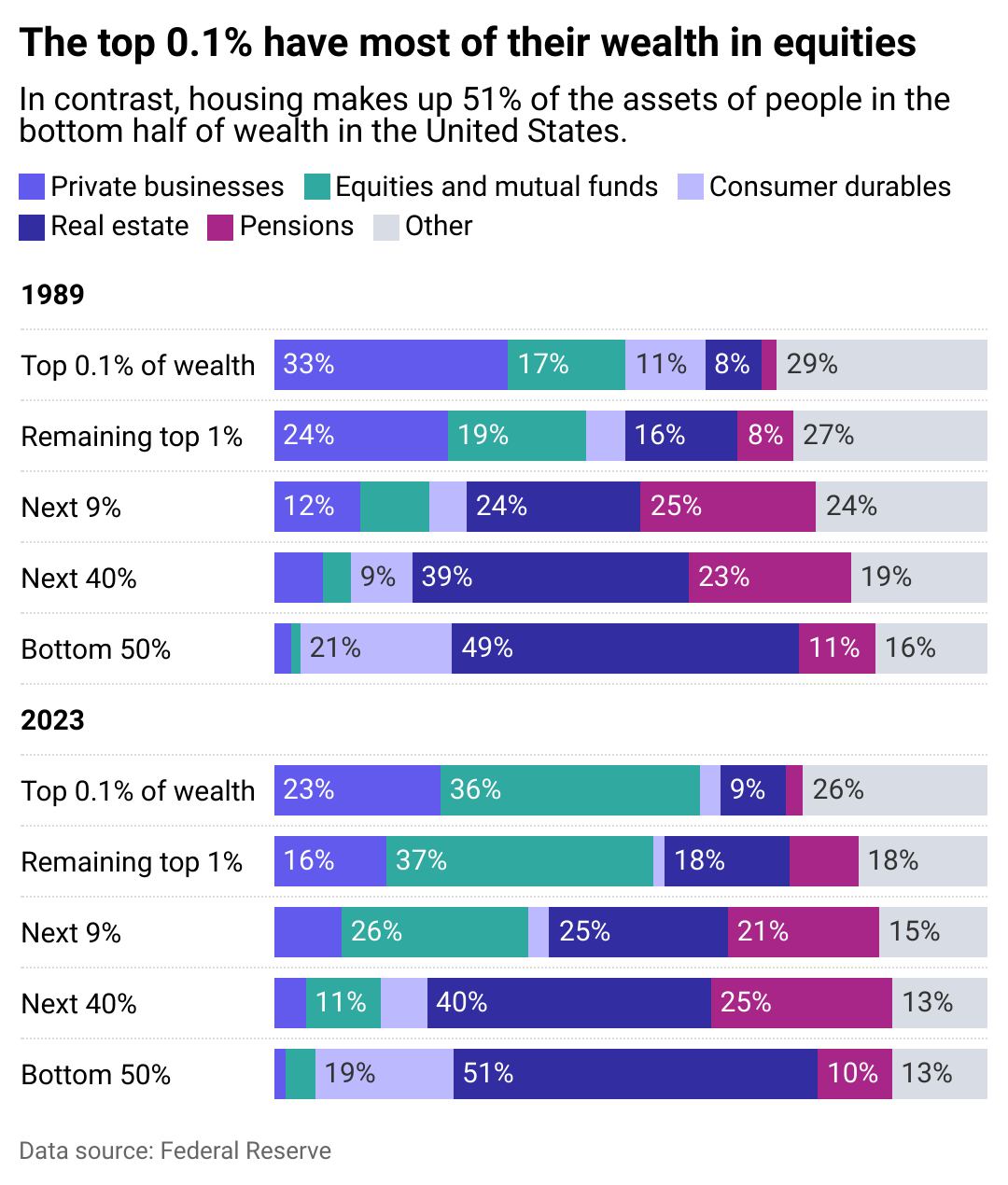
Canva
How has US wealth evolved since the 1980s?
America’s economy has exploded since 1989.
Gross domestic product, which measures all of the goods and services produced in a year, grew from $9.9 trillion to $22.5 trillion from 1989 to 2023 (after accounting for inflation), according to the Bureau of Economic Analysis. This figure represents a massive increase in economic output.
This increased productivity has fed into a similarly significant increase in wealth. The Wealth Enhancement Group used data from the Federal Reserve to look at how the assets held by U.S. households has evolved over time.
Data shows that American households owned a combined $161 trillion in assets in the third quarter of 2023, up from $24 trillion in 1989. That makes for a roughly 570% increase, or 170% after adjusting for inflation.
After accounting for debt, such as mortgages, America’s total household net worth grew to $142 trillion, up from $20 trillion. Although the number is down by about 1% from its peak in the second quarter of 2022, it still reflects a dramatic increase over time.
The most valuable asset class the typical American family holds is real estate. Besides a significant drop during the 2000s subprime mortgage crisis and a brief dip following interest rate hikes in 2022, housing has been a reliable generator of wealth for the middle class.
![]()

Household assets have skyrocketed since 1989
For Americans in the bottom half of the wealth distribution, housing made up 51% of their assets. Wealthier households, in contrast, tend to have higher shares of their savings in equities.
Households in the top 0.1% held 60% of their assets in shares of public and private companies in 2023. Meanwhile, households in the bottom half of wealth in the United States held only around 6% of assets in equities.
Yet, despite how much housing has grown in value, its ascent pales compared to the fastest-growing asset class: public equities.
Between 1989 and 2023, the value of public stocks held by American households grew by nearly 1,700%, rising from $2 trillion in value to $37 trillion. This trend, coupled with the fact that shares in companies are held disproportionately by the rich, has caused the share of American household assets held by the top 0.1% to increase from 8% to 12%.

The wealthy tend to own shares in companies
Some economists argue that, in theory, the ratio of a country’s wealth to its economy, as measured by GDP, should be constant over time.
Yet, data from the Bureau of Economic Analysis and the Federal Reserve data shows that the ratio of the net worth of American households and nonprofit organizations to GDP rose from around 3.6 in the 1980s to 5.5 in the third quarter of 2023.
In 2022, YiLi Chien and Ashley Stewart, two researchers at the St. Louis Federal Reserve, offered a few theories to explain how this ratio has increased over time. They suggest that American companies might now have greater market power, allowing them to charge more. The authors also note that since the internet era, many of America’s biggest companies, such as Meta and Google, offer their services to consumers for free—while investors may value their economic contributions, they do not count for much in the GDP numbers.
However, assets are not net worth. The rich are more likely to own their homes outright. In the third quarter of 2023, households from the top 0.1% owned $1.83 trillion worth of real estate while owing just $70 billion in mortgages. In contrast, households in the bottom 50% of wealth owned $4.87 billion of real estate against $3 billion of housing debt.
Story editing by Ashleigh Graf. Copy editing by Kristen Wegrzyn.
This story originally appeared on Wealth Enhancement Group and was produced and
distributed in partnership with Stacker Studio.